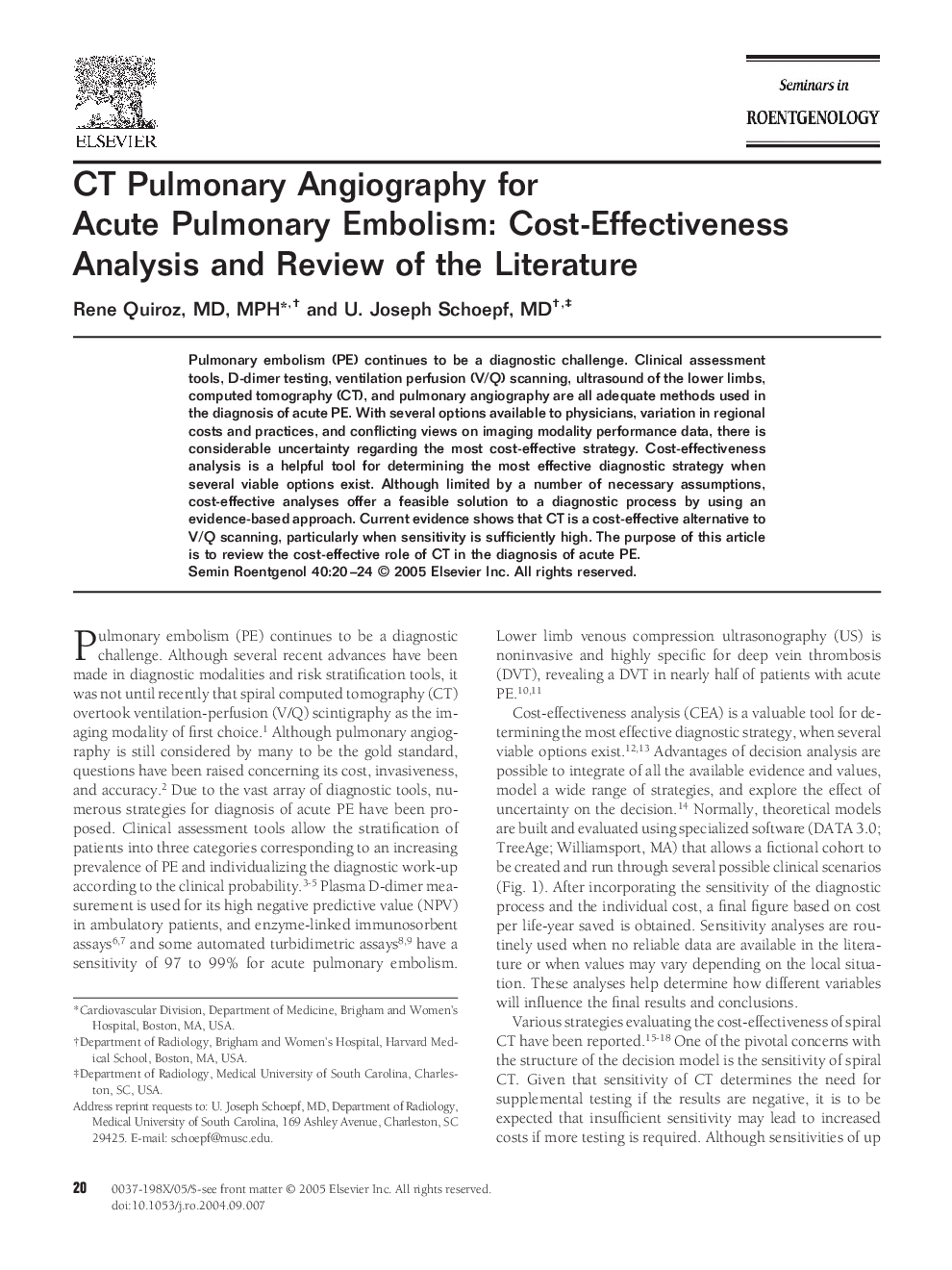| Article ID | Journal | Published Year | Pages | File Type |
|---|---|---|---|---|
| 9088174 | Seminars in Roentgenology | 2005 | 5 Pages |
Abstract
Pulmonary embolism (PE) continues to be a diagnostic challenge. Clinical assessment tools, D-dimer testing, ventilation perfusion (V/Q) scanning, ultrasound of the lower limbs, computed tomography (CT), and pulmonary angiography are all adequate methods used in the diagnosis of acute PE. With several options available to physicians, variation in regional costs and practices, and conflicting views on imaging modality performance data, there is considerable uncertainty regarding the most cost-effective strategy. Cost-effectiveness analysis is a helpful tool for determining the most effective diagnostic strategy when several viable options exist. Although limited by a number of necessary assumptions, cost-effective analyses offer a feasible solution to a diagnostic process by using an evidence-based approach. Current evidence shows that CT is a cost-effective alternative to V/Q scanning, particularly when sensitivity is sufficiently high. The purpose of this article is to review the cost-effective role of CT in the diagnosis of acute PE.
Related Topics
Health Sciences
Medicine and Dentistry
Radiology and Imaging
Authors
Rene MD, MPH, U. Joseph MD,
